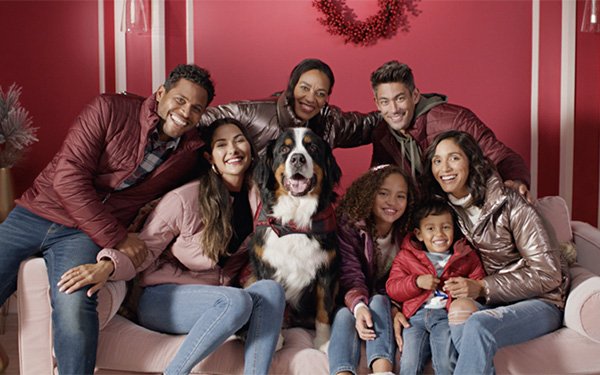
In a year when many retailers
are circling the drain, Target is thriving. MediaPost is naming it its Media Client of the Year because — after a bumpy year marred by errors like a massive data breach and failed international
expansion — it hasn’t just learned from its mistakes. It has emerged as the envy of the industry.
For one thing, it’s smashing its own sales records and rolling out
dozens of tempting private-label lines, offering must-haves in everything from baby clothes to adult beverages. For another, it’s owning all things digital, generating profitable growth from
same-day sales — a trick that eludes most of its competition.
And it has done all that by connecting with consumers using marketing that’s relevant, upbeat
and true to its design-savvy DNA.
advertisement
advertisement
“There is a lot I’m proud of in our marketing this year,” says Rick Gomez, executive vice president, Chief Marketing and
Digital Officer for the Minneapolis-based company. “And all of it ties back to living our purpose of helping all families discover the joy of everyday life.”
He calls
this year’s holiday campaign its most diverse body of work ever. He’s especially fond of efforts to celebrate the 20th anniversary of its first design partnership, an extravaganza
that looped in everyone from Michael Graves to Isaac Mizrahi. And he thinks the launch of Target Circle, the radically revamped loyalty program, “has the potential to be a huge game-changer for
our entire business.”
For more than 20 years, the retailer has staked its reputation on its cheap-chic image. But public perception waned, and a few years ago, realized it
needed an aggressive effort to win back America’s trendiest shoppers.
It included an onslaught of private-label brands -- more than two dozen. They include entries in
apparel, breaking new boundaries in size-inclusivity. Home is also an important area.
All that makes it a more appealing place to shop. “The business has been
strong,” says Brian Yarbrough, an analyst who follows the company for Edward Jones. “With the remodeled stores, more fashion offerings and all these delivery options, it’s winning
new customers–and winning back old customers, too. And it’s outperforming most other retailers.”
Groceries continue to be a significant challenge for Target.
“It’s a tough spot because Target is not a destination like a Walmart,” says Yarbrough. “It doesn’t have the full breadth of groceries. People may go there for apparel,
and say, 'Hey, while I’m here I may as well pick up some laundry detergent and a loaf of bread.’”
The ongoing rollout of thousands of Good & Gather food
items, its biggest private-label play yet, should help. “Grocery is doing better,” Yarbrough says, Not only are private-label items more profitable, “they drive loyalty. But I still
don’t think Target has created the model they want long-term.”
It’s performing remarkably well in delivering products. In its third-quarter results, released last
month, the company says in-store pickups gained by 50%, Shipt 100% and Drive Up 500%.
Some of that increase is due to expanding offers to more stores, but more than half of its growth happened
in mature locations, as consumers tried the service and loved it enough to use it repeatedly. Combined, they accounted for 80% of the chain’s digital growth in the quarter, up 31% from the same
quarter in the previous year.
Gomez believes much of the success comes from organizational changes. “We’ve brought together our marketing and digital teams and operations.
We’ve generated industry-leading digital growth for years now, but by having these functions working closer together, there’s the potential to do so much more.”
That means
more than just a seamless shopping experience. “We can also raise the bar on the brand experience, making it even more empathetic, guest-centric and cohesive.”
Target is also
investing in the physical shopping experience. With 1,862 stores, it is continuing its aggressive remodeling program, giving 300 stores a makeover this year. It expects a total of 1,000 to have been
spruced up by the end of 2020. Smaller stores, many in cities or near colleges, are also part of its plan. It has opened more than 30 in the last five years and is now opening 30 per
year.
Gomez says that over the last few years, a significant change has involved looking at people differently, moving past the idea of a core customer. “For us to be
successful, we need to be broadly appealing,” he says. “More than 30 million people shop our stores every week and millions more online.”
And while he says it continues to be
attentive to millennial and multicultural customers, “we’re also thinking about Gen Z and doing plenty of listening about what they’re looking for from retailers -- and employers.
And I’ve been really proud of how we’ve worked to market to empty nesters who are maybe down-sizing and thinking about shopping differently.”
When he speaks at industry
events, Gomez is fond of saying how important it is to him that Target stays humble. “We’re in the midst of an incredible run, absolutely. But we can’t rest on our laurels.
Every day, we have to earn our guests’ business.”